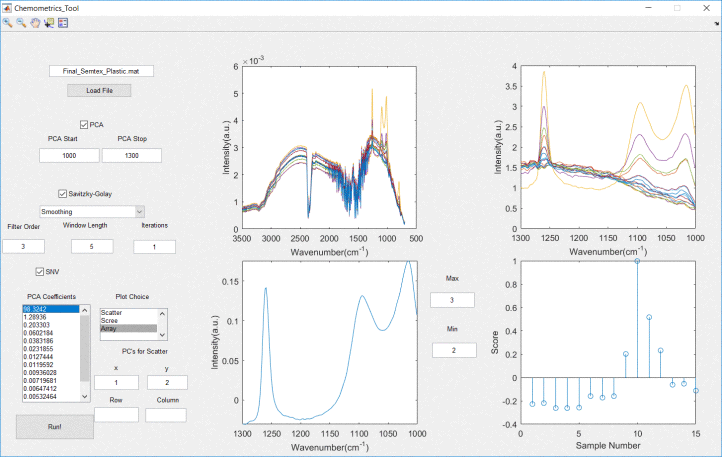Low-cost, microbolometer based, mid-Infrared explosives detection and imaging
Motivation:
Detection of trace amount of explosives is a primary concern of defense administrations around the world. Ideally this detection would be done in a way to enable quick and discreet identification of these explosive materials while suppressing false positives.
Solution:
Organic compounds, including many explosives, exhibit characteristic absorption features deemed spectral “fingerprints” in the mid-infrared(MIR) region of the electromagnetic spectra. By illuminating an object with MIR radiation and observing the amount of radiation reflected, one can identify the compound. The spectral region from 7-14 microns is specifically of interest for detection because this region has low absorption characteristics for MIR radiation. This allows for long stand-off distance detection allowing for equipment and operators to be a safe distance away from the object of interrogation, an ideal trait for an explosives detection system.
While incredibly sensitive and selective explosives detection systems have already been realized, they have remained impractical for many applications due their poor size, weight, cost and power (SWAP-C) characteristics. The novelty of the research being conducted here at Notre Dame is to attempt to decrease this SWAP-C drastically by utilizing commercially available, extremely low-cost microbolometer arrays. The devices used weigh a fraction of a pound, require no external cooling, cost around $250, and are easily integrated into any system via standard USB connections as they are designed to be worked with one's phone. The trade-off is that the signal-to-noise ratio, and the resulting image quality, is worse than that of the more expensive and bulky imaging arrays. However, these devices' intended market is thermal imaging applications such as checking insulation integrity, searching for electronics hot spots, and night-time surveillance. Below is a picture of David's cat with one of these devices (I did not put in the emissivity so the left bar is not reading proper temperature readings).

Since these devices were not intended for scientific applications there were no reported SNR metrics. The first part of this research was spent measuring the detection capabilities of these devices. These specifications were published in Optical Engineering (see bottom for publications list). In short it was found that unaltered these devices ran at 7 Hz and was capable of reaching the sensitivities required for spectroscopic imaging with an integration time of 3.43 seconds. However, recent work has shown that these devices can be altered, both in software and hardware, to be able to improve the imaging rate to 32 Hz at the same single frame SNR resulting in a sub-second integration time of 0.75 s. This level of sensitivity is unheard of in devices costing $250.
Using this camera a system was developed in a small portable platform that can enable not only cost effective explosives detection at the checkpoint, but also portable applications that were currently limited by devices size and power requirements. Custom application software was developed in Python here at Notre Dame in order to control these devices via a computer. This software includes a GUI, wireless data transfer, and analysis tools. A picture of the GUI is shown below. The black speckling on the image is that an array of pixels in that device do not give temperature readings and are used for some of device function.

In addition to the work on hardware software tools for data analysis have been developed such as the chemometrics tool shown below. This tool allows one to process spectral datasets with the popular principal component analysis (PCA). In addition spectral filtering can be done via savity-golay filtering that allows for the use of derivative spectroscopy.

Now that this extremely low-cost platform has been realized the next research is in different imaging modalities, such as thermal time constant imaging, and the development of detection algorithms.
See links below for papers and presentations.
- "Characterization of a low-cost, commercially available, vanadium oxide microbolometer array for spectroscopic imaging" - https://ieeexplore.ieee.org/abstract/document/8083954
- "Mid-infrared spectroscopic imaging with a low-cost microbolometer array" - https://ieeexplore.ieee.org/abstract/document/8083954
- "Realization of a plug-and-play, low SWAP-C, MIR imaging system utilizing a commercially available low-cost VOx microbolometer array for enabling imaging applications" - https://www.spiedigitallibrary.org/conference-proceedings-of-spie/10795/107950D/Realization-of-a-plug-and-play-low-SWAP-C-MIR/10.1117/12.2325588.full
Featured Researchers
-

David Benirschke
PhD Graduate Student, Department of Electrical Engineering